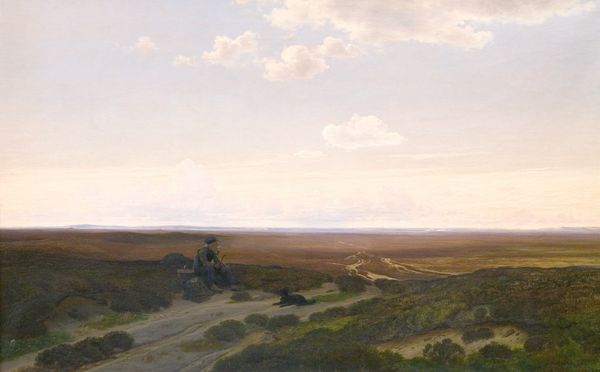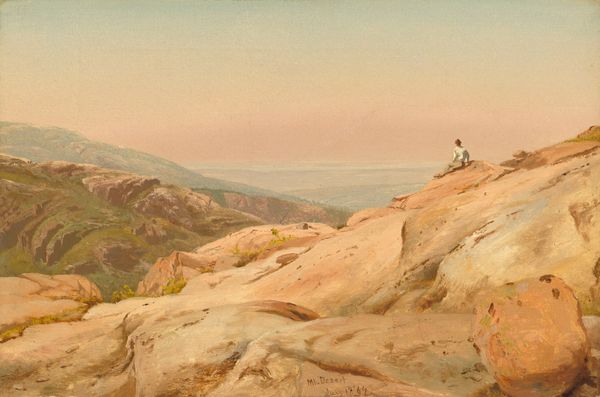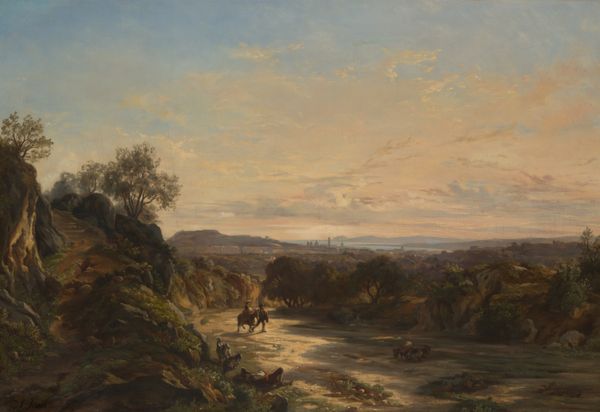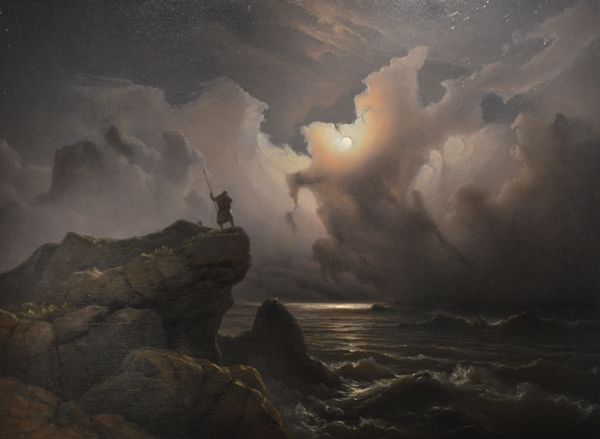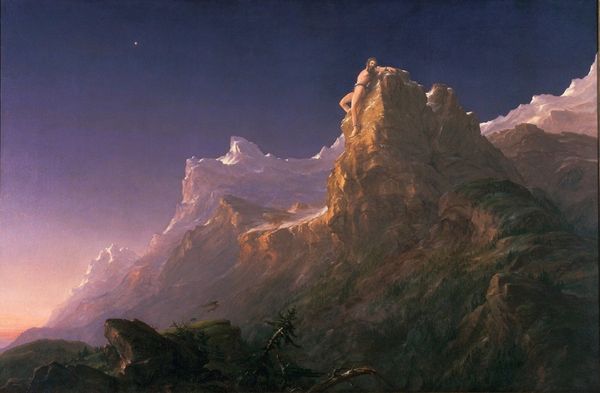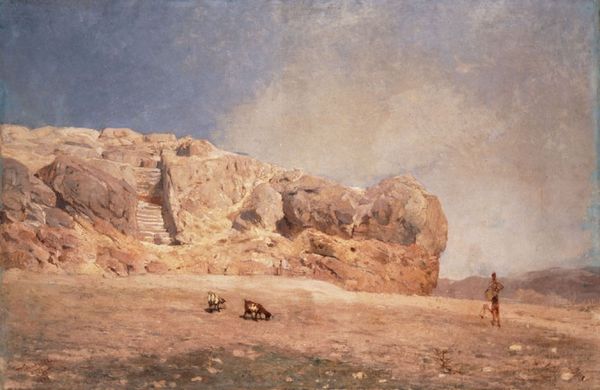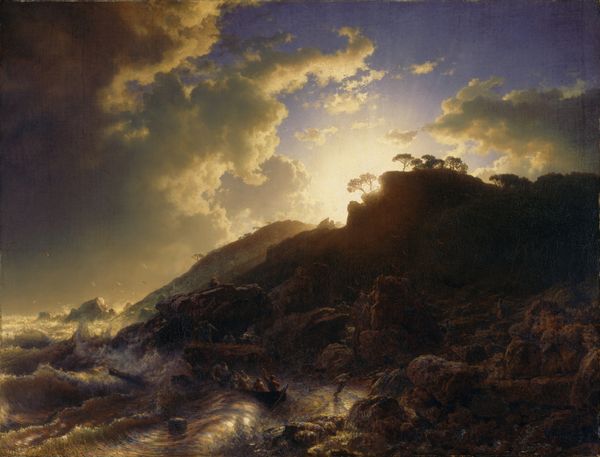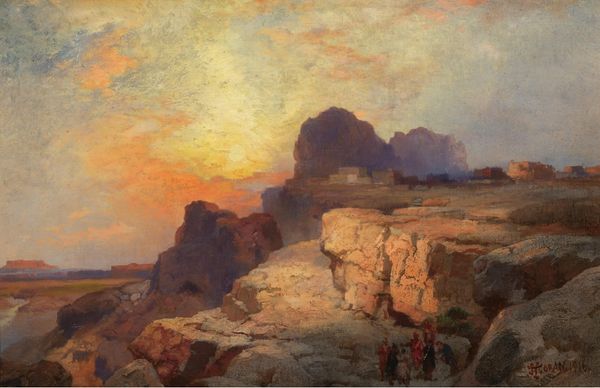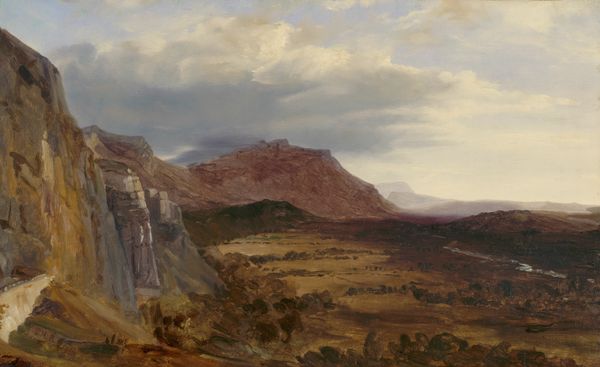
Copyright: Public domain
Curator: Take a moment to appreciate this striking landscape by Jean-Léon Gérôme, entitled "The Two Majesties," created in 1883. Editor: There's an immediate sense of grandeur, but also of loneliness, perhaps. The light and the scale are really effective at creating that mood. Curator: Indeed. Gérôme, of course, was celebrated for his meticulous realism, but I see an interesting commentary here. This oil-on-canvas embodies both academic art and something bordering romanticism, considering its representation of power and isolation. But let’s not disregard Gérôme’s fascination with North Africa, particularly Egypt. The lion, regal in its pose, oversees a landscape painted in exquisite detail. He made frequent visits and his atelier also manufactured/fabricated sets and props for these orientalist artworks. Editor: Right, the Orientalist lens is crucial here. But what is being suggested here beyond simple naturalism? The light – that almost painfully orange setting sun -- seems deliberately positioned to create visual drama. Are we invited to perceive the "king of beasts" as symbolic of something bigger in Gérôme’s work? Is this lion a trophy of labor and materials, a painted pet which never roamed wild? Or is he truly a “king?" Curator: The interplay of light, the vastness of the scene, the almost sculptural quality of the lion...It prompts reflection on how an artist working within academic tradition also engages with Romantic notions of nature's sublime power, that is manufactured to scale to adorn wealthy walls. Editor: Perhaps what impresses me most is that although the material craftmanship is definitely a vehicle through which the artist shares his colonial gaze, what is more striking here is how well he handles it to create that symbolic relationship of loneliness of an overman figure. He successfully conveys an illusion of wilderness. Curator: Absolutely, the material details become instruments in this grand, symbolic play. A desert panorama is a labor- and capital-intensive undertaking on such a grand scale; with the implication of what it represents during the 1880s being so poignant. Editor: Thank you for bringing those fascinating angles to light! The artist creates much beyond surface aesthetic and technique alone, but also gives some powerful commentaries and a glimpse to how this landscape should be framed when produced in that time.
Comments
No comments
Be the first to comment and join the conversation on the ultimate creative platform.

